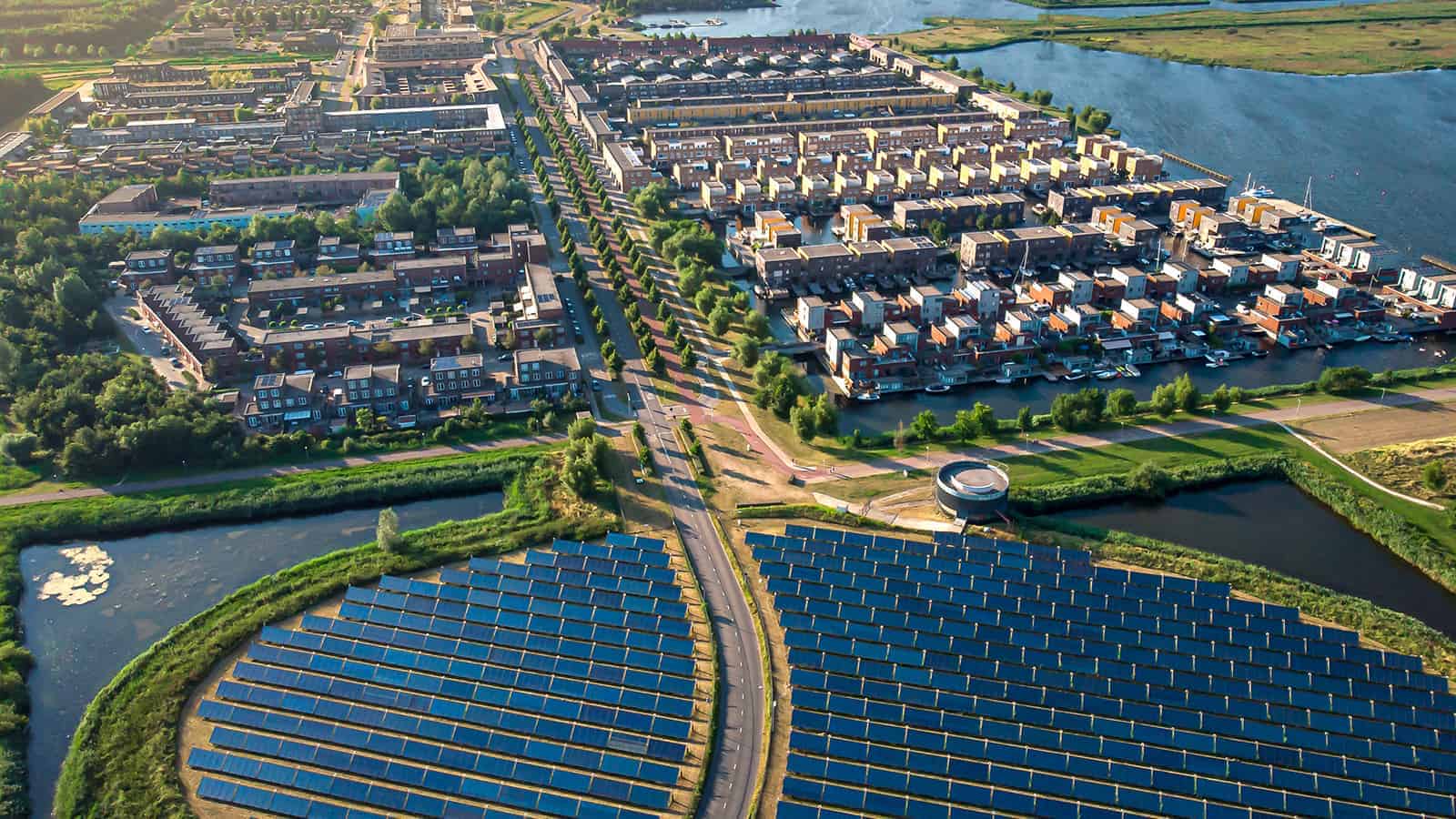Researchers advise that solar energy could lead to self-sustaining cities popping up around the globe. New models revealed that buildings in the city of Melbourne could provide 74% of their electricity through solar technology.
This technology would apply to individual residences, neighborhoods, and even the entire city. Before implementation, it’s crucial to check your roof first with the help of roofing contractors like the Ludington roofing contractors. If workers install them in roofs, walls, and windows, it could quickly ramp up clean energy throughout the city.
Researchers from the ARC Centre of Excellence in Exciton Science based at Monash University took part in the study. Collaborators at the University of Lisbon also pitched in. The findings have been published in the journal Solar Energy.
The study marks the first-ever modeling of the feasibility and effect of window-integrated photovoltaics in addition to other solar technologies on a citywide scale. The study reveals that citywide adoption of existing solar rooftop technology could dramatically reduce Melbourne’s emissions. Therefore, it would lessen dependence on electricity produced by fossil fuels.
Study authors added that comprehensive installments of energy-efficient solar windows would amplify the effect. Photovoltaic technology deployed in building facades could also lower the city’s carbon footprint.
Researchers hope that their models will encourage policymakers, energy providers, construction companies, and building owners to create more self-sustaining cities. Due to greater affordability and availability, installing photovoltaics in both new and existing structures has never been easier.
The team compared Melbourne’s electricity needs in 2018 to the potential electricity production using widespread solar energy. They obtained data on Melbourne’s CBD (central business district) from Jemena, CitiPower & Powercor distribution companies. The independent Victorian research body, the Centre for New Energy Technologies (C4NET), provided access to the data.
How Solar Energy Helps to Create Self-sustaining Cities
They found that self-sustaining cities could provide 74% of Melbourne’s building consumption needs through solar power. Rooftop solar would comprise 88% of the electricity, with wall-integrated and window solar providing 8% and 4%, respectively.
The team found that wall and window-integrated solar power performed better in winter months compared with rooftop solar. They delivered more reliable, sustainable benefits and value throughout the year due to less sunlight reduction.
The potential contribution of window-integrated solar increased to 18% in neighborhoods due to tall buildings and window-to-wall ratios. Researchers identified the yearly solar radiation on Melbourne’s building surfaces to pinpoint the ideal areas to install solar panels. They took into account technical constraints and costs in their assessment of self-sustaining cities.
Comprehensive models simulated the solar radiation and PV potential of urban areas in Melbourne. The research team considered various factors, such as the impact of shadows cast by balconies and performance specs of the sun-powered technologies.
Researchers used correlation and linear regression analysis, along with other methods, to determine the relationship between urban indicators and PV potential. The study area included the 37.4 km2 area of central Melbourne, of which 35.1km2 consists of residential and commercial buildings erected in 2019.
The results indicated that the most significant possibility to create self-sustaining cities lies in further rooftop solar development. Many neighborhoods throughout Melbourne already have rooftop solar installed. In fact, rooftop solar additions to the city accounted for most of Victoria’s 72,000 installations in 2020.
Australia Leads the Way in Greener Municipal Planning
Australia ranks highly in sustainability, generating the most solar power in the world. It has eight times the global average of rooftop solar per person, paving the way for self-sustaining cities. The Commonwealth’s Clean Energy Regulator revealed that 2.7 million homes had rooftop solar power installed by the end of 2020. This means that, across Australia, 25% of homes run on solar energy.
Researchers discovered other areas with potential solar installation potential in Melbourne. However, the high-density urban centers had the most significant development prospects. The central business district (CBD), in particular, would benefit from window-integrated solar panels.
“By using photovoltaic technology commercially available today and incorporating the expected advances in wall and window-integrated solar technology over the next ten years, we could potentially see our CBD on its way to net zero in the coming decades,” said lead author Professor Jacek Jasieniak.
The research team believes that rooftop solar technologies will help Melbourne transition to a self-sustaining city.
“We began importing coal-fired power from the LaTrobe Valley in the 1920s to stop the practice of burning smog-inducing coal briquettes onsite to power our CBD buildings, and it’s now feasible that over one hundred years later, we could see a full-circle moment of Melbourne’s buildings returning to local power generation within the CBD, but using clean, climate-safe technologies that help us meet Australia’s Net Zero 2050 target.”
Co-author Dr. Jenny Zhou said: “Although there’s plenty of policies supporting energy-efficiency standards for new buildings, we’re yet to see a substantial response to ensuring our existing buildings are retrofitted to meet the challenges of climate change. Our research provides a framework that can help decision-makers move forward with implementing photovoltaic technologies that will reduce our cities’ reliance on damaging fossil fuels.”
First author Dr. Maria Panagiotidou adds: “In the near future, market penetration and deployment of high-efficient solar windows can make a substantive contribution towards the carbon footprint mitigation of high-rise developments. As the world transitions towards a net-zero future, these local energy solutions would play a critical role in increasing the propensity of PVs within urban environments.”
Final Thoughts on How Self-sustaining cities Run on Solar Power May Soon Become a Reality
Clean energies such as solar power have become cheaper and easier to install in recent years. Many cities, especially in Australia, have made plans to integrate solar to achieve self-sustaining cities fully. If this pattern continues, cities all over the world may soon run on zero-carbon energies.
A study found that in the city of Melbourne, nearly 75% of buildings could generate electricity through solar technologies. So, keep your eyes peeled, as self-sustaining cities may crop up in your area soon.
















 Community
Community

